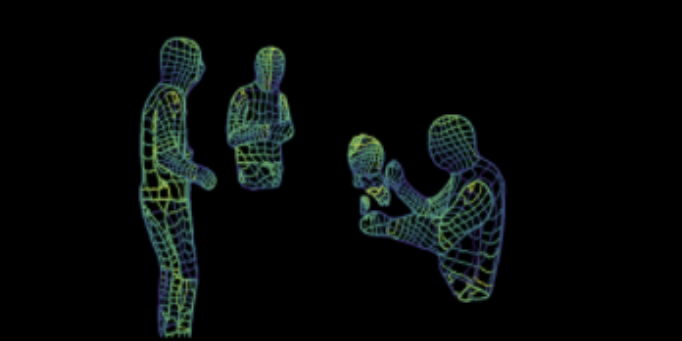“We developed a deep neural network that maps the phase and amplitude of WiFi signals to UV coordinates within 24 human regions. The results of the study reveal that our model can estimate the dense pose of multiple subjects, with comparable performance to image-based approaches, by utilizing WiFi signals as the only input.”
Wasn’t this the plot point of The Dark Knight?

We only have to enter his name to be safe.Came here to say this!
This article is a year old. Do we have posting standards in here?
Sorry, I didn’t notice the date when I posted. I can take it down if requested.
deleted by creator
Absolutely ludicrous to paint this development as anything but the wet dream of both a burglar and a police state.
Also VR nerds. Current tracking is either based on the headset, so you can’t move your arms unless the headset can see them, or your arms have to be seen by lighthouses, or you rely purely on gyroscope and accelerometers for tracking, which tend to drift. So either you have blind spots, have to deal with occlusion, or will slowly drift and have to recalibrate periodically. Wifi-based tracking seems like a neat idea tbh.
Edit: considering wifi is just photons that aren’t wiggling fast enough for us to see, I’d be surprised if the government doesn’t already have this technology behind closed doors.
Which leads to the obvious question: how long has the military been able to do this?
I heard that they can analyze window glass to get audio recordings because as a slow moving liquid, vibrations in the air leave an imprint on the glass.
Sounds like Fringe Science to me, honestly
The “glass is a liquid” thing is a myth. The reason why old windows tended to be thicker at the bottom (which is usually the cited reason for this myth) is because windowpane making techniques weren’t very good and so they would always have one thicker side. The builders would naturally install the pane with that side on the bottom because it was more stable. Glass doesn’t “flow” over time, it’s a solid
crystallineamorphous material.You had it until the end. Glass has an amorphous structure, not crystalline, but is still very much a solid.
You know what else let’s you see through walls? Windows. (Suck it, Linux users!)
In more than one sense, yes.




